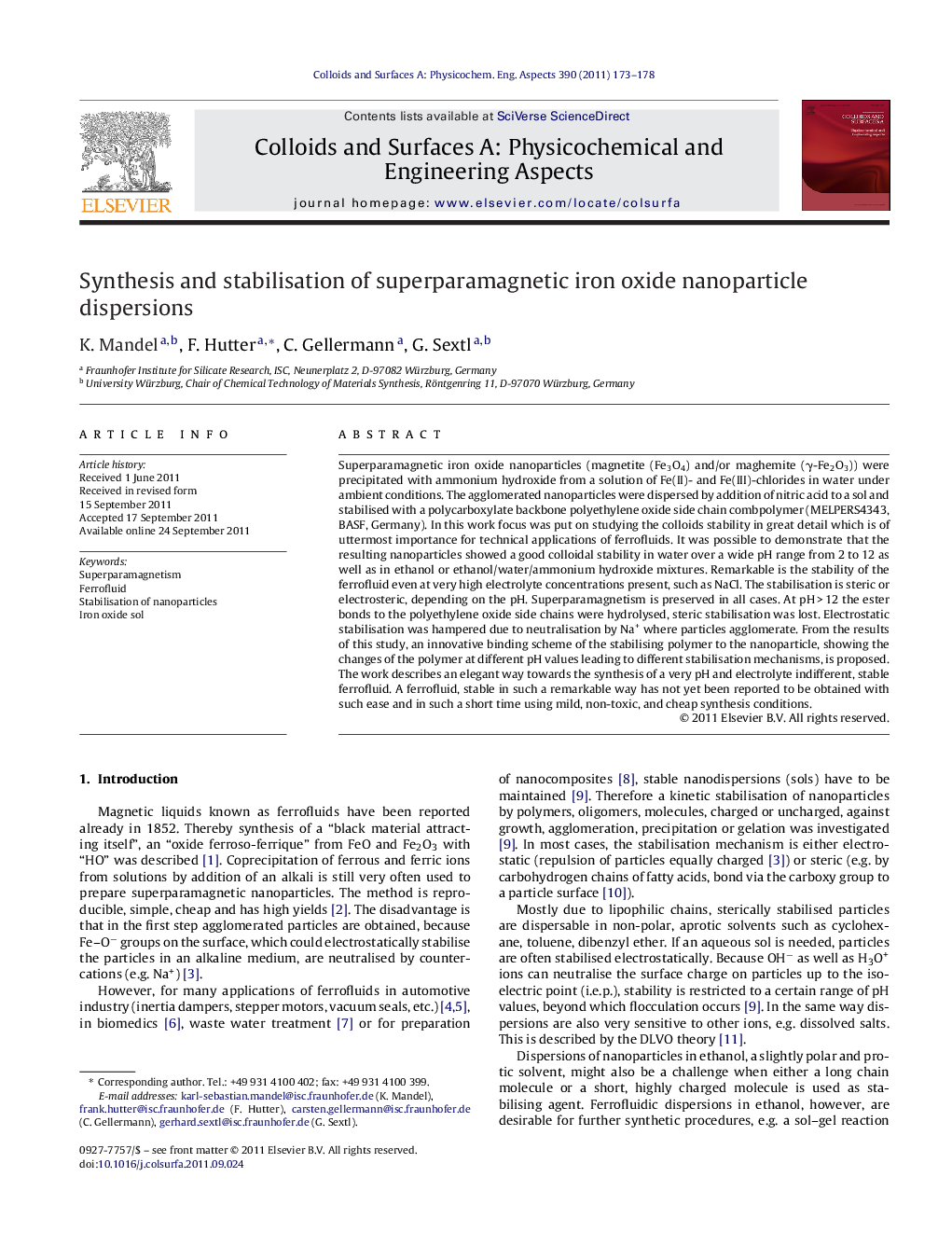| Article ID | Journal | Published Year | Pages | File Type |
|---|---|---|---|---|
| 594480 | Colloids and Surfaces A: Physicochemical and Engineering Aspects | 2011 | 6 Pages |
Superparamagnetic iron oxide nanoparticles (magnetite (Fe3O4) and/or maghemite (γ-Fe2O3)) were precipitated with ammonium hydroxide from a solution of Fe(II)- and Fe(III)-chlorides in water under ambient conditions. The agglomerated nanoparticles were dispersed by addition of nitric acid to a sol and stabilised with a polycarboxylate backbone polyethylene oxide side chain combpolymer (MELPERS4343, BASF, Germany). In this work focus was put on studying the colloids stability in great detail which is of uttermost importance for technical applications of ferrofluids. It was possible to demonstrate that the resulting nanoparticles showed a good colloidal stability in water over a wide pH range from 2 to 12 as well as in ethanol or ethanol/water/ammonium hydroxide mixtures. Remarkable is the stability of the ferrofluid even at very high electrolyte concentrations present, such as NaCl. The stabilisation is steric or electrosteric, depending on the pH. Superparamagnetism is preserved in all cases. At pH > 12 the ester bonds to the polyethylene oxide side chains were hydrolysed, steric stabilisation was lost. Electrostatic stabilisation was hampered due to neutralisation by Na+ where particles agglomerate. From the results of this study, an innovative binding scheme of the stabilising polymer to the nanoparticle, showing the changes of the polymer at different pH values leading to different stabilisation mechanisms, is proposed. The work describes an elegant way towards the synthesis of a very pH and electrolyte indifferent, stable ferrofluid. A ferrofluid, stable in such a remarkable way has not yet been reported to be obtained with such ease and in such a short time using mild, non-toxic, and cheap synthesis conditions.
Graphical abstractSuperparamagnetic iron oxide nanoparticles dispersed in water are attracted in the gradient of a magnetic field; right: particles stabilised by a combpolymer; left: particles without stabilisation.Figure optionsDownload full-size imageDownload as PowerPoint slideHighlights► Coprecipitated superparamagnetic iron oxide particles form μm-sized agglomerates. ► Particle treatment with nitric acid and MELPERS4343 leads to nanodispersions. ► Sols stable: from pH 2 to 12 in water; in saline solutions and in ethanol. ► Particle stabilisation: mainly steric; changes to electrosteric with increasing pH. ► At pH > 12: degradation of the stabilising polymer by hydrolysis of ester bonds.
